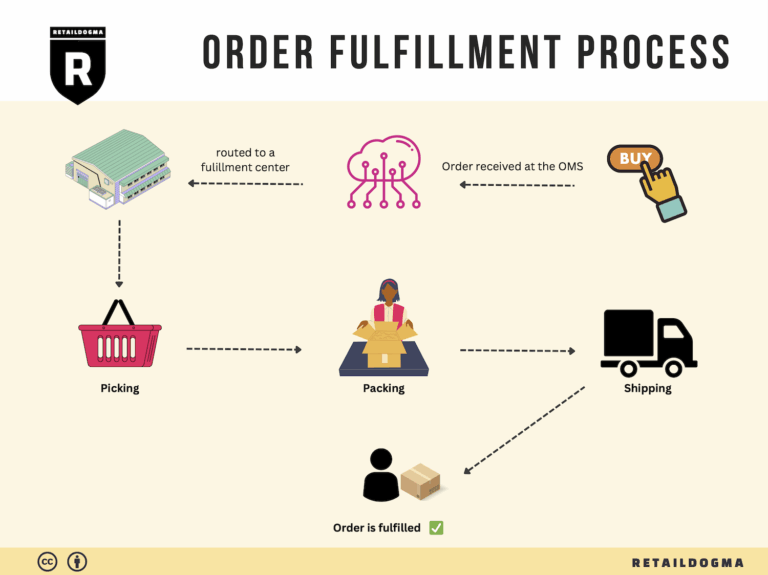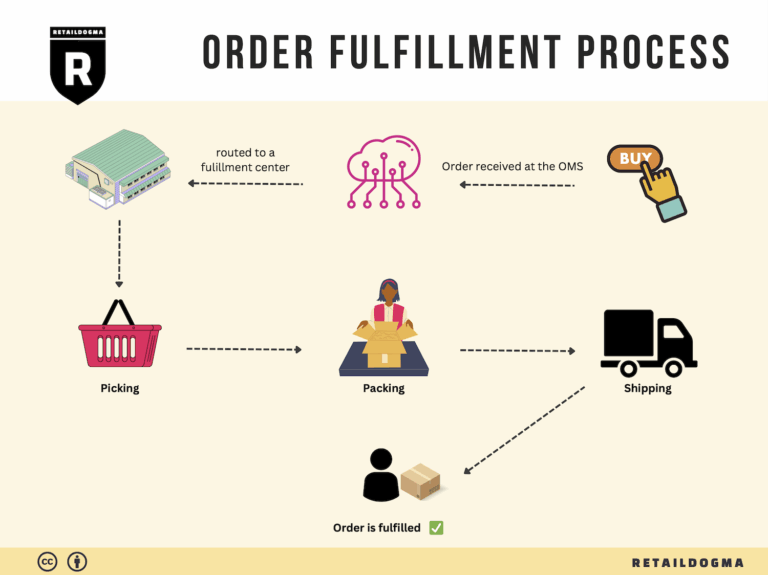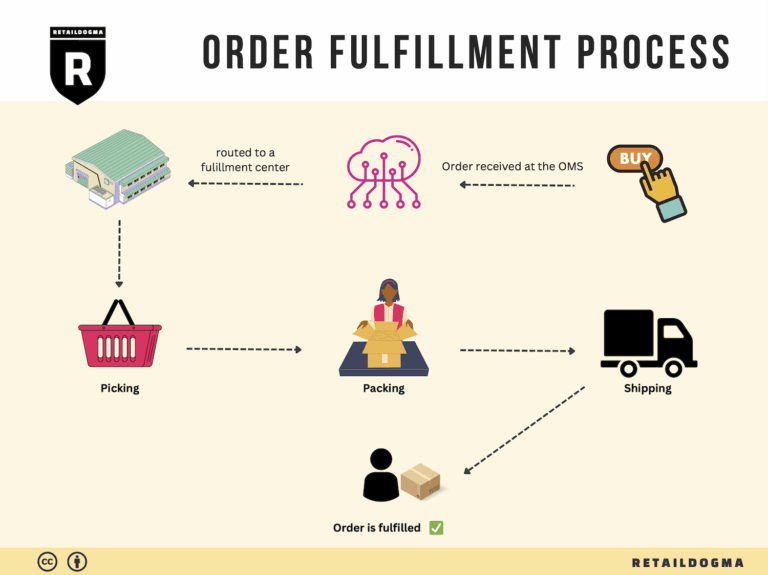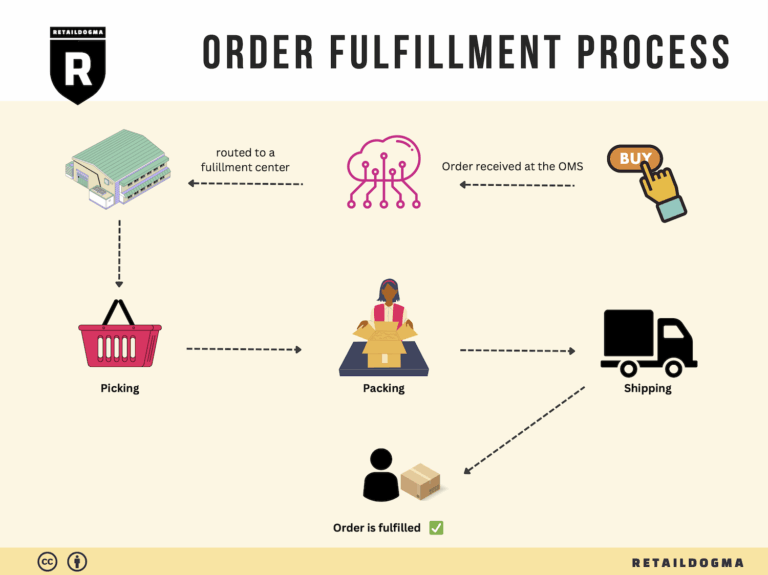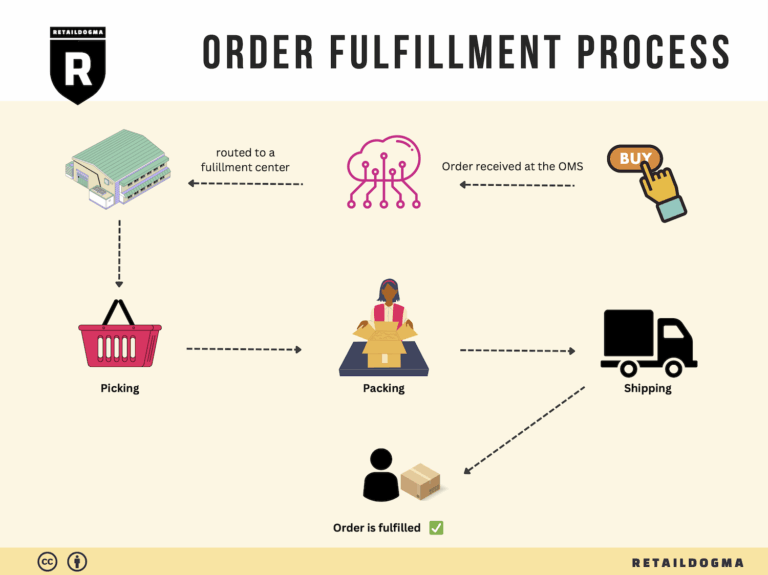How Order Fulfillment Works: A Step-by-Step Guide for Businesses
What is E-commerce Fulfillment? An Introduction for Growing Businesses
Understanding E-commerce Fulfillment: A Key to Scaling Your Business
For many growing online businesses, the excitement of increasing sales can quickly turn into a daunting challenge when it comes to packing and shipping orders. The logistics of fulfilling customer orders can feel overwhelming, especially as your business scales. From managing inventory to ensuring timely deliveries, the fulfillment process is critical to maintaining customer satisfaction and driving repeat business.
At its core, e-commerce fulfillment is the process of getting a product from your warehouse or fulfillment center to your customer’s doorstep. This includes everything from receiving inventory, storing products, processing orders, and ultimately shipping them out. As your online store grows, understanding the nuances of fulfillment becomes essential to streamline operations and reduce costs.
In this guide, we will delve into various fulfillment models that can support your growing business. You’ll learn about traditional options like Third-Party Logistics (3PL) providers, as well as Fulfillment by Amazon (FBA), which can simplify your shipping process. Each model has its own set of advantages and drawbacks, and selecting the right one can significantly impact your operational efficiency.
We will also cover core fulfillment services that are crucial to your business. These include inventory management, order processing, packing, shipping, and returns management. Understanding these services will help you identify what you need from a fulfillment partner and how they can help you scale effectively.
Choosing the right fulfillment partner is a decision that can make or break your logistics strategy. We will provide insights on what to look for in a partner, such as their technology capabilities, service offerings, and customer support. Additionally, we will discuss pricing structures, so you can evaluate the cost-effectiveness of different fulfillment options and make informed decisions that align with your budget.
The goal of this guide is to empower e-commerce business owners, operations managers, and entrepreneurs to make smart logistics decisions that will facilitate growth. By understanding the intricacies of e-commerce fulfillment, you can position your business for long-term success and enhance your customer experience. Let’s get started on this journey to streamline your fulfillment process and drive your business forward.
What You’ll Learn In This Guide
- What is E-commerce Fulfillment? An Introduction for Growing Businesses
- The Order Fulfillment Process: From ‘Buy’ Button to Customer’s Door
- Comparing Fulfillment Models: In-House vs. 3PL vs. Dropshipping
- A Deep Dive into Amazon FBA: Pros, Cons, and Who It’s For
- Core Services Offered by Fulfillment Centers
- How to Choose a Fulfillment Partner: A 6-Point Checklist
- Understanding Fulfillment Pricing: A Breakdown of Common Fees
- Frequently Asked Questions (FAQs) about Fulfillment
- Conclusion: Is Outsourcing Fulfillment the Right Move for Your Business?
- Important Disclaimer
The Order Fulfillment Process: From ‘Buy’ Button to Customer’s Door
1. Receiving Inventory
The order fulfillment process begins with receiving inventory, a critical step where products are delivered to the fulfillment center. This stage involves checking the incoming shipments against purchase orders to ensure accuracy in quantities and product types. The importance of this step cannot be overstated; discrepancies at this stage can lead to stockouts, overstock situations, and ultimately customer dissatisfaction.
Key Term: SKU (Stock Keeping Unit)
Each product is assigned a unique SKU that helps in tracking inventory efficiently. This identification system is essential for managing inventory levels, as it allows businesses to monitor which items are moving quickly and which are not. Implementing a robust receiving process ensures that inventory is available for order fulfillment, setting the stage for the entire operation.
2. Warehouse Storage
Once inventory is received and verified, it is stored in the warehouse. Effective warehouse storage strategies involve organizing products in a manner that maximizes space and facilitates easy access. This is often achieved through various storage methods, including shelving, pallet racks, and bins.
The significance of this step lies in its impact on efficiency and speed during order fulfillment. A well-organized storage system reduces the time it takes for employees to locate products when orders are placed, thereby enhancing overall productivity.
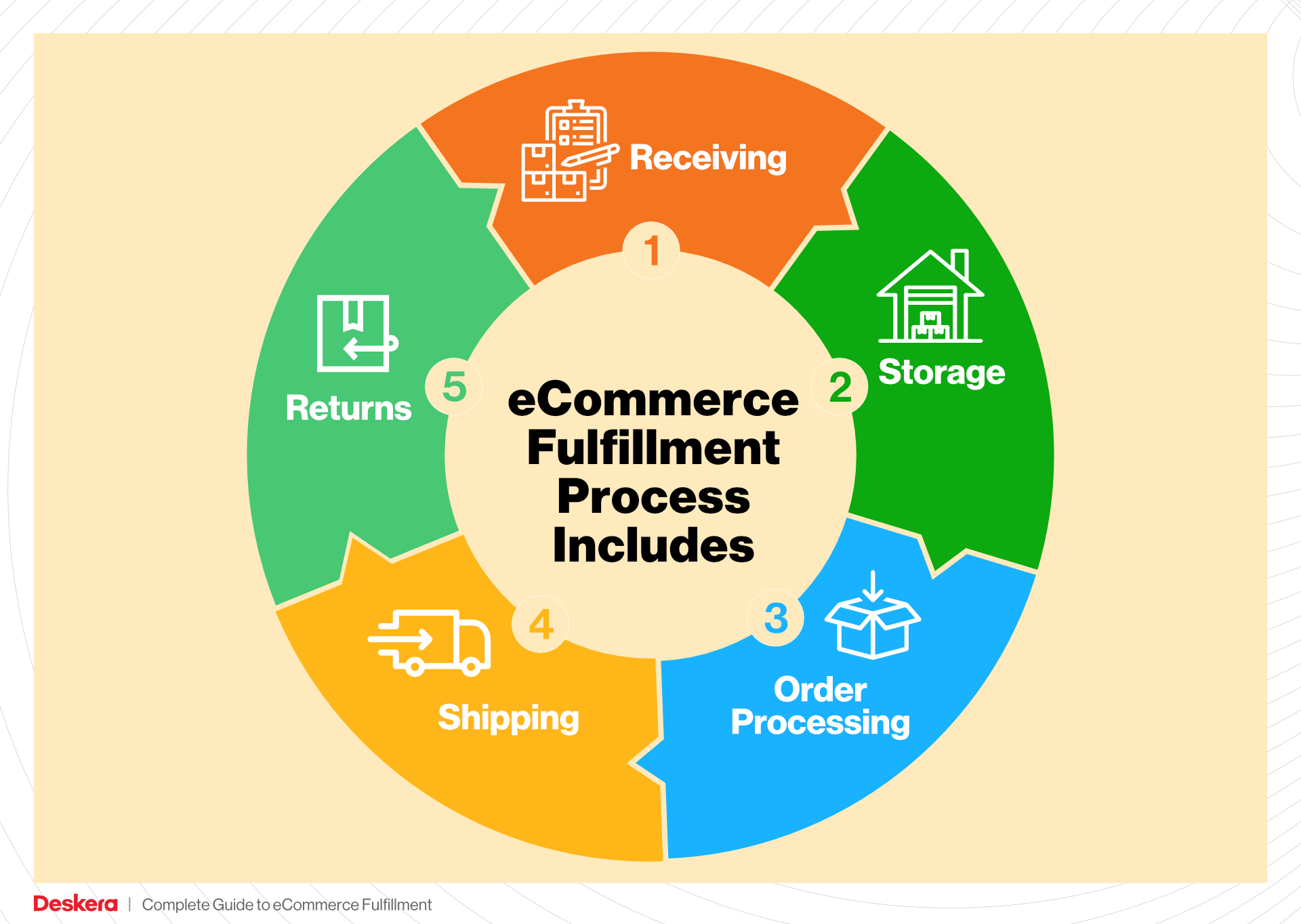
Key Term: ABC Analysis
ABC analysis is a method used to categorize inventory based on importance and value. By identifying high-value items (A), medium-value items (B), and low-value items (C), businesses can prioritize storage and picking strategies accordingly. This targeted approach ensures that the most critical inventory is readily accessible, which is vital for maintaining high service levels.
3. Order Picking
The next step in the order fulfillment process is order picking, where items are retrieved from storage to fulfill customer orders. This can be done manually or through automated systems, depending on the complexity and scale of the operation.
The order picking process is crucial because it directly influences the speed and accuracy of order fulfillment. Errors made during this stage can lead to incorrect shipments, which can harm customer relationships and increase operational costs.
Key Term: Pick Lists
A pick list is a document or digital list that outlines the items and quantities needed for each order. It guides warehouse staff through the picking process, ensuring they gather the correct products. Efficient order picking systems can significantly reduce labor costs and improve turnaround times, making this a vital component of the overall fulfillment strategy.
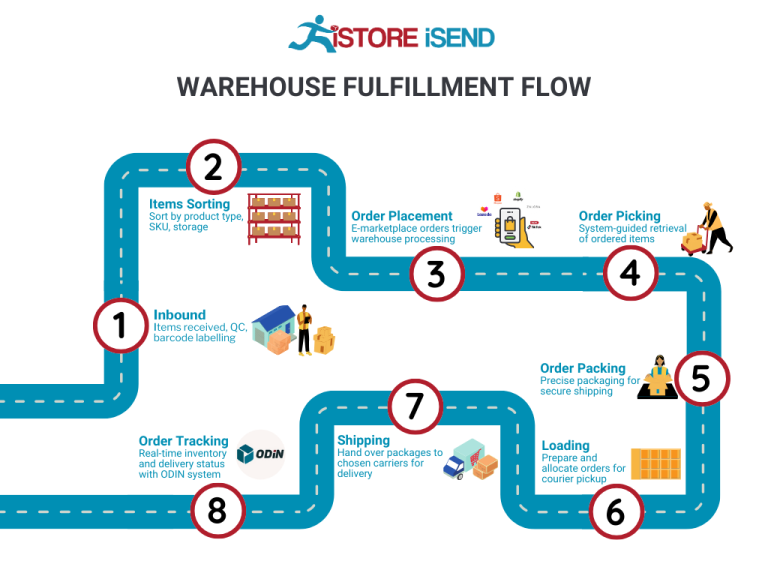
4. Order Packing
After items are picked, they move to the order packing stage. This step involves securely packaging products to prevent damage during transit and ensuring that the correct items are included in each order.
Order packing is important for maintaining product integrity and customer satisfaction. Well-packed orders reduce the likelihood of returns and complaints, which can be costly for businesses. Additionally, effective packing can optimize shipping costs by minimizing the dimensional weight of packages.
Key Term: Packing Slip
A packing slip is an essential document that accompanies each order, detailing the items included in the shipment. It serves as a verification tool for both the fulfillment center and the customer. Including a packing slip can enhance the customer experience by providing clarity and transparency regarding what to expect in their delivery.
5. Shipping & Delivery
The final step in the order fulfillment process is shipping and delivery. This phase involves selecting the appropriate shipping method, preparing the shipment for dispatch, and ensuring timely delivery to the customer.
Shipping and delivery are critical for customer satisfaction and can significantly influence repeat business. Fast and reliable delivery options enhance the customer experience, while delays can lead to frustration and lost sales.
Key Term: Last-Mile Delivery
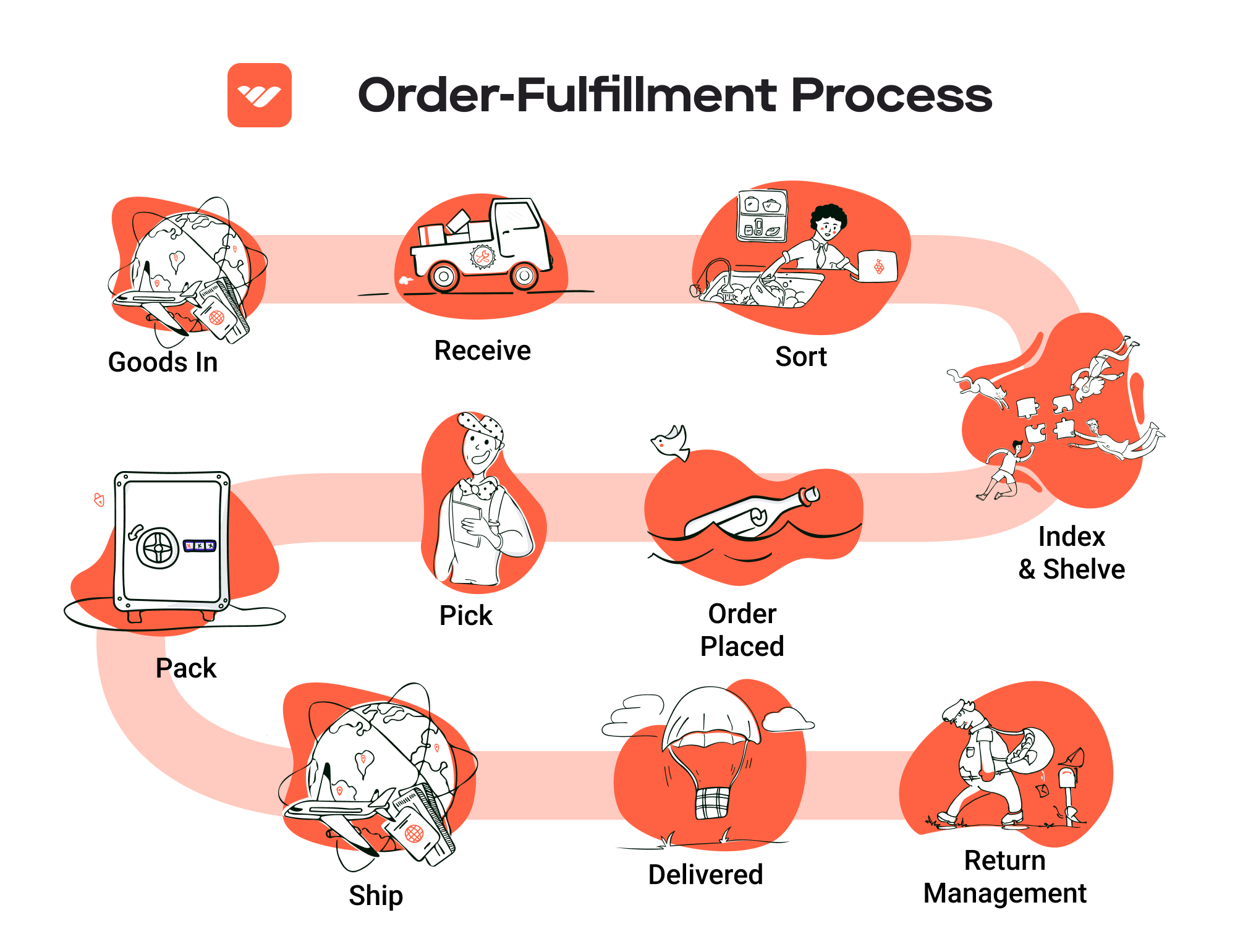
Last-mile delivery refers to the final leg of the shipping process, where the package is delivered from a transportation hub to the customer’s doorstep. This stage is often the most challenging and costly aspect of logistics. Businesses can optimize last-mile delivery through partnerships with local carriers, utilizing technology for route optimization, and offering various delivery options to meet customer preferences.
By understanding and optimizing each of these steps in the order fulfillment process, e-commerce businesses can improve operational efficiency, enhance customer satisfaction, and ultimately scale their logistics effectively.
Comparing Fulfillment Models: In-House vs. 3PL vs. Dropshipping
Fulfillment Model Comparison
| Model | Who Handles Inventory | Best For (Business Stage) | Key Advantage | Key Disadvantage |
|---|---|---|---|---|
| In-House Fulfillment | Business itself | Established businesses | Full control over inventory and processes | High overhead costs and resource-intensive |
| Third-Party Logistics (3PL) | Third-party logistics provider | Growing businesses | Scalable operations and reduced overhead | Less control over inventory and potential delays |
| Dropshipping | Supplier | Startups and small businesses | Low upfront investment and no inventory risk | Lower profit margins and reliance on suppliers |
In-House Fulfillment
In-house fulfillment refers to the process where a business manages its own inventory and shipping operations. This model is often adopted by established businesses that have the necessary resources, including space, staff, and technology, to handle logistics. The key advantage of in-house fulfillment is the complete control it provides over inventory management, order processing, and shipping logistics. Businesses can tailor their operations to meet specific customer needs, maintain quality control, and respond quickly to market changes. However, this model comes with significant disadvantages. The overhead costs can be high due to the need for warehousing, staffing, and technology investments. Additionally, as order volumes fluctuate, maintaining an efficient operation can become resource-intensive, leading to potential inefficiencies or bottlenecks.
Third-Party Logistics (3PL)
Third-party logistics (3PL) involves outsourcing logistics operations to a specialized provider. This model is particularly beneficial for growing businesses that may not have the capacity or expertise to manage fulfillment in-house. A key advantage of 3PL is scalability; as a business grows, it can easily adjust its logistics needs without significant capital investments in infrastructure. 3PL providers also bring expertise and advanced technology to the table, which can enhance operational efficiency and reduce shipping costs. However, the downside includes a loss of control over inventory and fulfillment processes. Businesses relying on 3PL may experience delays and inconsistencies, particularly if the provider struggles to meet demand or maintain quality standards. Therefore, choosing the right 3PL partner is critical to ensuring a seamless customer experience.
Dropshipping
Dropshipping is a fulfillment model where a business sells products without holding any inventory. Instead, when an order is placed, the business purchases the item from a third-party supplier who ships it directly to the customer. This model is ideal for startups and small businesses that have limited capital, as it requires no upfront investment in inventory. The key advantage of dropshipping is the minimal financial risk; businesses only pay for products after a sale is made, allowing for a flexible and low-overhead operation. However, dropshipping also presents significant challenges. Profit margins are typically lower compared to other models, as suppliers often charge higher prices for their services. Additionally, businesses are heavily reliant on suppliers for inventory management and shipping, which can lead to issues with order fulfillment, quality control, and customer satisfaction. A lack of control over inventory can result in stockouts or delays, impacting the overall customer experience.
Conclusion
Each fulfillment model offers distinct advantages and disadvantages, and the choice largely depends on the specific needs and stage of your business. In-house fulfillment provides control and customization, making it suitable for established businesses that can handle the associated costs. Third-party logistics offer scalability and expertise, ideal for growing businesses looking to streamline operations. Finally, dropshipping presents a low-risk entry point for startups, albeit with challenges related to profit margins and supplier reliability. Understanding these differences is crucial for e-commerce business owners and operations managers as they seek to scale their logistics effectively.
A Deep Dive into Amazon FBA: Pros, Cons, and Who It’s For
Understanding Fulfillment by Amazon (FBA)
Fulfillment by Amazon (FBA) is a service that allows e-commerce sellers to store their products in Amazon’s fulfillment centers. Amazon takes care of storage, packaging, and shipping to customers, as well as handling returns and customer service. This enables sellers to leverage Amazon’s vast logistics network and customer base to grow their businesses.
How FBA Works
-
Product Listing: Sellers create listings for their products on Amazon, just as they would with any e-commerce platform.
-
Inventory Shipment: Sellers send their products to Amazon’s fulfillment centers. Amazon provides guidelines on how to prepare and package items for shipment.
-
Storage: Once received, Amazon stores the products in their warehouses. Sellers can monitor their inventory levels through their Amazon Seller Central account.
-
Order Fulfillment: When a customer places an order, Amazon picks, packs, and ships the product on behalf of the seller.
-
Customer Service: Amazon handles all customer inquiries and returns related to FBA products, allowing sellers to focus on other aspects of their business.
-
Payment: After the sale, Amazon deposits the revenue into the seller’s account, minus applicable fees.
Pros of FBA
Prime Eligibility
One of the most significant advantages of FBA is that it automatically qualifies products for Amazon Prime. Prime members enjoy free two-day shipping, which can significantly increase the likelihood of purchases. Given that Prime members tend to spend more than non-members, this can lead to higher sales volumes for FBA sellers.
Customer Trust
Products fulfilled by Amazon benefit from the company’s reputation for reliable service. Buyers often feel more secure purchasing items that are backed by Amazon’s customer service and return policies, leading to higher conversion rates.
Multi-Channel Fulfillment
FBA is not limited to just Amazon sales. Sellers can use FBA to fulfill orders from other sales channels, such as their own websites or other e-commerce platforms. This flexibility allows for streamlined operations and consistent customer service across different sales channels.
Scalable Operations
FBA enables businesses to scale without the need for significant investment in logistics and warehousing. Sellers can focus on marketing and product development while Amazon handles the complexities of storage and shipping.
Cons of FBA
High Fees
While FBA offers many benefits, it comes at a cost. Amazon charges various fees, including storage fees for inventory held in their warehouses and fulfillment fees per unit sold. These costs can eat into profit margins, particularly for low-priced items.
Strict Inventory Rules
Amazon has stringent rules regarding inventory management. Sellers must ensure that their products comply with Amazon’s guidelines, which can include specific packaging and labeling requirements. Non-compliance can result in penalties or removal of products from the platform.
Commingling Risks
FBA allows for commingling of inventory, meaning that a seller’s products may be mixed with those of other sellers. This can lead to issues such as receiving returns for products that were not originally sold by a seller, creating complications in inventory tracking and customer satisfaction.
Dependency on Amazon
Using FBA ties a seller’s business closely to Amazon’s platform and policies. Changes to Amazon’s algorithms, fees, or terms of service can have a direct impact on a seller’s business operations and profitability.
Who is FBA Best For?
Fulfillment by Amazon is an excellent choice for various types of sellers, but it particularly suits:
-
Small to Medium-Sized Businesses: Businesses looking to scale without investing heavily in logistics can benefit from FBA’s infrastructure.
-
New Sellers: Those just starting in e-commerce can leverage Amazon’s established customer base and credibility to gain traction quickly.
-
Sellers with High Volume: Businesses that sell products with higher margins or in larger volumes can absorb the fees associated with FBA while still maintaining profitability.
-
Brands Seeking Exposure: Companies looking to expand their reach and visibility can use FBA to tap into Amazon’s extensive customer base.
In conclusion, Fulfillment by Amazon offers a robust solution for e-commerce sellers aiming to streamline their operations and enhance customer satisfaction. However, potential users must weigh the benefits against the costs and operational dependencies to determine if it aligns with their business goals. By carefully considering these factors, businesses can make informed decisions about whether FBA is the right fit for them.
Core Services Offered by Fulfillment Centers
Inventory Management & Warehousing
Inventory management and warehousing are foundational services provided by fulfillment centers, designed to help e-commerce businesses maintain optimal stock levels while minimizing costs. Fulfillment centers utilize advanced inventory management systems to track products in real-time, ensuring that businesses have accurate visibility over their stock. This involves categorizing items, managing reorder points, and overseeing stock levels across multiple locations.
The benefits of effective inventory management are manifold. Firstly, it reduces the risk of overstocking or stockouts, both of which can lead to lost sales and dissatisfied customers. By accurately forecasting demand and adjusting inventory levels accordingly, businesses can improve cash flow and operational efficiency. Additionally, warehousing solutions allow for centralized storage of products, which simplifies the logistics of shipping and reduces the time it takes to fulfill orders. By leveraging the warehousing capabilities of fulfillment centers, e-commerce businesses can focus on scaling their operations without the overhead of managing physical storage space.
Pick and Pack Services
Pick and pack services are integral to the efficiency of e-commerce fulfillment. This process involves selecting items from the warehouse (picking) and packaging them for shipment (packing). Fulfillment centers employ trained staff and advanced technology, such as automated picking systems and barcode scanning, to ensure accuracy and speed in order fulfillment.
The primary benefit of pick and pack services is the enhanced efficiency in order processing. By outsourcing these tasks to fulfillment centers, e-commerce businesses can significantly reduce the time it takes to get products into customers’ hands. Faster fulfillment times lead to improved customer satisfaction, as buyers increasingly expect quick delivery. Furthermore, fulfillment centers can handle fluctuating order volumes during peak seasons, allowing businesses to scale operations seamlessly without the need for additional in-house labor or resources.
Kitting and Assembly
Kitting and assembly services involve the grouping of individual items into a single ready-to-ship package, often tailored to specific customer needs or promotional offers. This service is particularly beneficial for e-commerce businesses that offer bundled products, gift sets, or subscription boxes. Fulfillment centers can efficiently assemble these kits, ensuring that all components are included and packaged correctly.
The advantage of kitting and assembly is twofold. Firstly, it enhances the customer experience by providing convenient, ready-made packages that meet specific consumer preferences. This can lead to increased sales and higher average order values, as customers are often drawn to bundled offerings. Secondly, it streamlines the fulfillment process by allowing for bulk assembly of products, which can be more efficient than processing each item individually. This service not only saves time but also reduces the potential for errors, ensuring that customers receive exactly what they ordered.
Returns Management (Reverse Logistics)
Returns management, often referred to as reverse logistics, is a critical service offered by fulfillment centers that focuses on handling product returns efficiently and effectively. This process includes receiving returned items, inspecting them for quality, restocking them if they are in sellable condition, and processing refunds or exchanges.
The importance of robust returns management cannot be overstated, especially for e-commerce businesses where return rates can be significantly higher than traditional retail. A well-managed returns process can enhance customer satisfaction and loyalty, as customers appreciate hassle-free return options. Furthermore, efficient handling of returns can reduce the financial impact on businesses by minimizing losses associated with unsellable inventory. By partnering with fulfillment centers that specialize in returns management, e-commerce businesses can streamline their operations, improve customer service, and ultimately foster a positive brand reputation.
Conclusion
In conclusion, fulfillment centers provide a comprehensive suite of core services that are vital for the success of e-commerce businesses. From inventory management and warehousing to pick and pack services, kitting and assembly, and returns management, these services not only enhance operational efficiency but also contribute to a better customer experience. By leveraging the expertise and technology of fulfillment centers, e-commerce businesses can focus on scaling their operations, optimizing their supply chains, and meeting the ever-evolving demands of their customers.
How to Choose a Fulfillment Partner: A 6-Point Checklist
Location & Warehouse Network
Importance:
The location of your fulfillment partner’s warehouses plays a crucial role in your shipping times and costs. A strategically located network can significantly enhance delivery speed and reduce shipping expenses, especially for e-commerce businesses that rely on timely delivery to maintain customer satisfaction.
Questions to Ask:
– Where are your warehouses located, and how do they align with my target market?
– What is your shipping radius, and do you offer same-day or next-day delivery options?
– How do you handle logistics for areas that are not covered by your warehouses?
Technology & Integrations
Importance:
In today’s digital age, the technology used by your fulfillment partner can greatly impact efficiency and accuracy. A partner that utilizes modern technology can streamline operations, reduce errors, and provide you with real-time tracking and reporting.
Questions to Ask:
– What type of warehouse management system (WMS) do you use, and how does it integrate with my e-commerce platform?
– Can you provide real-time inventory updates and order tracking?
– Are there any APIs available for seamless integration with my existing systems?
Specializations (e.g., Cold Storage, Oversized Items)
Importance:
Different businesses have unique needs, and not all fulfillment centers are equipped to handle specialized items. If you sell perishables, oversized products, or fragile items, it’s essential to partner with a fulfillment center that has the necessary capabilities.
Questions to Ask:
– What types of products do you specialize in handling?
– Do you have cold storage capabilities, and how do you ensure the quality of perishable items?
– How do you manage the fulfillment of oversized or bulky items?
Scalability & Capacity
Importance:
As your business grows, your fulfillment needs will change. A good partner should be able to scale operations to accommodate increased order volumes without compromising on service quality.
Questions to Ask:
– What is your current capacity, and how do you manage peak seasons or unexpected surges in order volume?
– Do you have a plan for scaling operations if my business grows significantly?
– How do you handle inventory management during times of high demand?
Pricing and Contracts
Importance:
Understanding the pricing structure and contract terms is vital for maintaining your profit margins. Hidden fees or unfavorable contract terms can lead to unexpected costs that may impact your bottom line.
Questions to Ask:
– What is your pricing structure, and are there any additional fees I should be aware of?
– Can you provide a detailed breakdown of costs associated with storage, picking, packing, and shipping?
– What are the terms of the contract, and is there flexibility for renegotiation as my needs change?
Customer Support & Reviews
Importance:
Effective customer support can make a significant difference in your partnership. A responsive fulfillment partner can quickly resolve issues, helping to maintain your business’s reputation and customer satisfaction.
Questions to Ask:
– What type of customer support do you offer, and what are your response times?
– Can you provide references or case studies from other clients in my industry?
– How do you handle errors or issues with order fulfillment, and what is your process for addressing customer complaints?
Conclusion
Choosing the right fulfillment partner is a pivotal decision for your e-commerce business. By carefully considering these six critical areas—location and warehouse network, technology and integrations, specializations, scalability and capacity, pricing and contracts, and customer support—you can ensure that you select a partner that aligns with your business goals and helps drive your success. Always remember to conduct thorough research, ask the right questions, and trust your instincts when it comes to making this important choice.
Understanding Fulfillment Pricing: A Breakdown of Common Fees
Initial Setup Fees
When partnering with a fulfillment center, businesses often encounter initial setup fees. These fees typically cover the costs associated with onboarding, including account setup, system integration, and the establishment of operational workflows. The pricing can vary widely based on the complexity of your inventory and the fulfillment center’s capabilities.
Calculation: Initial setup fees can be a flat rate or based on the volume of products being integrated into the system. For example, a fulfillment center may charge a standard fee of $500 for basic setups, but this could increase to $1,500 or more if extensive customizations or integrations with existing e-commerce platforms (like Shopify or WooCommerce) are required.
Receiving Fees
Receiving fees are charged when products arrive at the fulfillment center. These fees cover the labor and resources needed to unload, inspect, and store incoming inventory.
Calculation: Typically, receiving fees are charged per pallet or carton. For instance, a fulfillment center might charge $25 per pallet received. If a shipment contains ten pallets, your total receiving fee would amount to $250. Some centers may also implement tiered pricing, where the rate decreases as the volume of pallets increases.
Storage Fees (per pallet/bin)
Storage fees are incurred for the space your inventory occupies within the fulfillment center. This fee is essential for managing the costs associated with warehousing products until they are shipped to customers.
Calculation: Storage fees are generally calculated on a monthly basis, either per pallet or per cubic foot. For example, a fulfillment center may charge $15 per pallet per month. If you have 20 pallets stored, your monthly storage fee would be $300. Some fulfillment centers may also offer discounts for long-term storage commitments, while others might impose additional fees for items that remain in storage beyond a certain period.
Pick & Pack Fees (per item/order)
Pick and pack fees cover the labor involved in selecting products from inventory (picking) and preparing them for shipment (packing). This is a crucial step in the fulfillment process, as it directly impacts order accuracy and customer satisfaction.
Calculation: Pick and pack fees can vary based on the number of items in an order or the complexity of the packing process. A typical model might charge $2 per item for picking and an additional $1 for packing, resulting in a total of $3 for a single item order. For larger orders, fulfillment centers may offer bulk pricing, such as a flat fee for orders with multiple items, which can help to reduce costs.
Shipping Fees
Shipping fees encompass the costs associated with delivering orders to customers. These fees are influenced by factors such as package weight, dimensions, destination, and the chosen shipping method (e.g., standard, expedited, or same-day delivery).
Calculation: Shipping fees are often calculated based on a combination of weight and distance. For example, a fulfillment center might charge $5 for shipping up to 5 pounds within a 100-mile radius, with additional fees for heavier packages or longer distances. Many fulfillment centers partner with multiple carriers to provide competitive shipping rates, allowing businesses to choose the most cost-effective option.
Tips for Getting an Accurate Quote
-
Be Transparent About Your Needs: Provide detailed information about your inventory, including dimensions, weight, and expected order volume. The more information you provide, the more accurate the quote will be.
-
Ask About Pricing Structures: Inquire whether the fulfillment center uses flat rates, tiered pricing, or a combination of both. Understanding their pricing model will help you anticipate costs more accurately.
-
Request a Breakdown of Fees: A comprehensive quote should include a detailed breakdown of all potential fees. This will allow you to compare different fulfillment centers more effectively.
-
Consider Long-Term Commitments: Some fulfillment centers offer discounts for long-term contracts or higher volumes. If you anticipate significant growth, discuss potential savings with your provider.
-
Evaluate Additional Services: Ask about any extra services that may incur costs, such as returns processing, custom packaging, or kitting. Understanding these additional fees can help you make informed decisions about your fulfillment strategy.
By understanding these common fulfillment pricing models and following these tips, e-commerce business owners can navigate the complexities of fulfillment costs and make informed decisions to scale their operations effectively.
Frequently Asked Questions (FAQs) about Fulfillment
1. What is a Kroger Fulfillment Center?
A Kroger Fulfillment Center (CFC) is a specialized facility designed to streamline the order fulfillment process for e-commerce customers. It combines automated systems and traditional warehousing methods to efficiently pick, pack, and ship grocery items directly to consumers. These centers utilize advanced technology, such as robotics and automated sorting systems, to enhance productivity and accuracy in order processing.
2. How does Kroger’s hub-and-spoke model work?
Kroger employs a hub-and-spoke distribution model where larger fulfillment centers (hubs) serve as central points that distribute products to smaller, regional facilities (spokes). This model allows for efficient inventory management and quicker delivery times, enabling Kroger to serve a wide geographic area while maintaining fresh product availability.
3. What technologies are used in Kroger Fulfillment Centers?
Kroger is integrating advanced technologies from partnerships, such as those with Ocado, to improve operational efficiency. Key technologies include robotic picking systems and automated loading mechanisms that enhance labor productivity and reduce costs. These innovations enable the centers to process large volumes of orders with greater speed and accuracy.
4. What is the difference between a warehouse and a fulfillment center?
A warehouse primarily focuses on storing goods, while a fulfillment center is designed for processing orders and shipping them directly to customers. Fulfillment centers often incorporate technology and logistics systems tailored to handle the complexities of e-commerce, such as real-time inventory tracking and order management.
5. What are the benefits of using a fulfillment center like Kroger’s?
Utilizing a fulfillment center offers several advantages, including faster order processing, reduced shipping times, and improved inventory management. Businesses can leverage Kroger’s extensive distribution network and technological capabilities to enhance their e-commerce operations without the overhead of managing their own fulfillment logistics.
6. How much do fulfillment services cost?
The cost of fulfillment services can vary widely based on factors such as order volume, storage needs, and the specific services required (e.g., packing, shipping, returns management). Typically, costs are structured around per-order fees, storage fees, and shipping rates. It’s advisable to obtain quotes from multiple fulfillment providers to compare pricing structures.
7. What is a 3PL, and how does it relate to Kroger Fulfillment Centers?
A Third-Party Logistics (3PL) provider is a company that offers outsourced logistics services, including transportation, warehousing, and fulfillment. Kroger’s fulfillment centers can function similarly to a 3PL, providing businesses access to its logistics network and technology for managing their e-commerce orders efficiently.
8. Can small businesses benefit from Kroger’s fulfillment services?
Yes, small businesses can benefit from leveraging Kroger’s fulfillment services by gaining access to a robust distribution network and advanced technology without the need for significant upfront investment. This partnership can help small businesses scale their operations, improve delivery times, and enhance customer satisfaction.
9. How does Kroger ensure the quality of its products during fulfillment?
Kroger employs strict quality control measures throughout the fulfillment process, including regular inspections of products, temperature controls for perishable items, and automated systems that minimize handling errors. These practices help ensure that customers receive fresh and high-quality products in their orders.
10. What should I consider when choosing a fulfillment partner?
When selecting a fulfillment partner, consider factors such as their technology capabilities, service offerings, geographic reach, cost structure, and scalability. It’s also important to assess their track record in meeting delivery timelines and handling returns, as these elements are crucial for maintaining customer satisfaction in e-commerce.
Conclusion: Is Outsourcing Fulfillment the Right Move for Your Business?
Evaluating the Benefits of Outsourcing Fulfillment
Outsourcing fulfillment can be a game-changer for e-commerce businesses looking to scale operations efficiently. By leveraging third-party fulfillment services, companies can save significant time and resources, allowing them to focus on core business activities such as marketing and product development. This strategic shift not only reduces the burden of managing logistics but also streamlines the order fulfillment process, leading to improved customer satisfaction.
Scalability is another crucial advantage of outsourcing. As your business grows, so do your fulfillment needs. Partnering with a fulfillment service enables you to scale operations quickly without the need for substantial investments in infrastructure or labor. Whether you experience seasonal spikes in demand or consistent growth, a reliable fulfillment partner can adapt to your changing needs, ensuring you never miss an opportunity to serve your customers.
Furthermore, fulfillment providers often bring specialized expertise and technology to the table, enhancing operational efficiency. With advanced automation, inventory management systems, and data analytics, these partners can optimize your supply chain, reduce shipping costs, and improve delivery times. This expertise is invaluable, especially in a competitive market where customer expectations continue to rise.
However, it is essential to choose the right fulfillment partner that aligns with your business goals. Conduct thorough research and consider factors such as service capabilities, technology integration, and customer support. A well-matched partnership can propel your growth and streamline operations, while a poor choice can lead to complications and dissatisfaction.
As you evaluate your current shipping processes, consider conducting an audit to identify inefficiencies or areas for improvement. Ask yourself if outsourcing fulfillment could be the next strategic move for your business. By taking this step, you can position your e-commerce operation for sustainable growth and success in the ever-evolving marketplace.
Important Disclaimer
⚠️ Important Disclaimer
The information in this guide is for educational purposes. Fulfillment services, pricing, and platform features change frequently. Always conduct your own due diligence and consult with providers directly before making business decisions.

